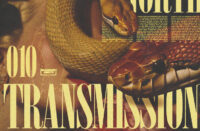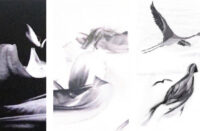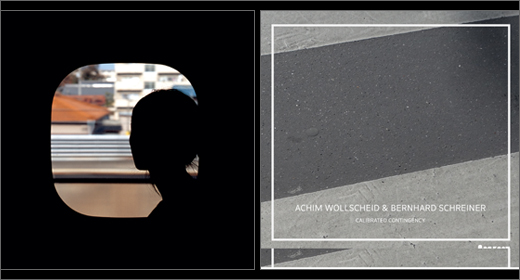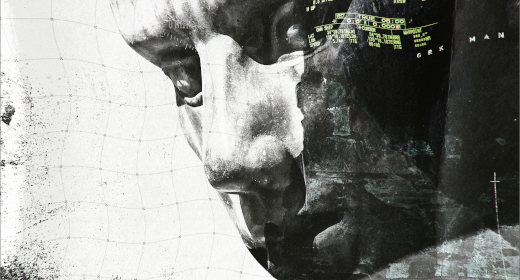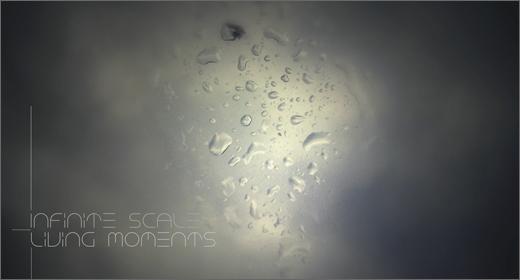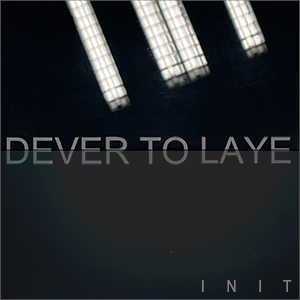While their core ideas are always there, minimal variations make these pieces work, as they’re not just loops going on for 25 minutes straight; there’s so few minimal details that it’s worth pointing them out individually instead of providing examples.

Periods of silence are rather unpredictable
The Nature of Things leaves a lot of room to think, in two ways; the first is related to the concept behind the album and how it ties to the music, as the record is based on De rerum natura, a poem written to illustrate Democritus’ principles, a philosopher who, if you’ve learned about in high school like I did, you may recall for being quite spot on in regards to his views of the universe; the idea of invisible particles making up everything there is taken as a fact now, and the eternal life of the universe itself is a concept you can let roam mind roam in for ages. The other way the record leaves a lot of room to think is physically, thanks to silence, which is utilized extensively; when there isn’t silence, there’s still barely anything going on at all, as some notes periodically come in, remain completely unaltered for a few seconds, and then proceed to decay back into nothingness. Both the minimalism and the concept of this LP make it almost mind-numbing, but even if it may seem patience testing, I believe you should be focusing on the music. Repetitiveness and simplicity do not necessarily make something static, and I’m not referring to how the silence alternates with the notes, rather to how these pieces are slowly moving and shifting. While their core ideas are always there, minimal variations make these pieces work, as they’re not just loops going on for 25 minutes straight; there’s so few minimal details that it’s worth pointing them out individually instead of providing examples.
The first of these details come with the first track, of course. Its first nine minutes or so consist of a series of notes repeating after periods of silence; what seems to be the trick is that said periods of silence are rather unpredictable, they initially seem to be getting longer and longer after each loop, but then you kind of lose track and they seem to be all over the place; I say that they seem to be because it may actually just be my mind tricking itself, given that this loop quickly gets tiring, and I don’t mean that in the sense that it’s lacking variety, I mean that it gives off a strong sense of fatigue, it’s hard to keep track. Regardless, this loop does come to an end after these first nine minutes, as the piece gets a bit fuzzier; the timbre of the notes shifts into more of a buzz, instead of the clean and completely flat tone you’ve heard until that point, and the loop continues with this new added texture that gives it a new life. It’s not a sudden change, as even in the first part you occasionally get some rougher textures, but it’s around that point that they get more upfront. Then again, after about nine minutes the track goes back to its roots, removing any kind of denser tones to favor its apathetic ones, but even here they’re not the same as when the piece started, as they now seem to be a bit lighter and more elegant, in a way.
The second composition is based on “Trio for Flutes,” by Morton Feldman (1972); it’s immediately clear how, given that it introduces two notes separately at first to then play both at once. Feldman’s composition sees the first flute hold its note, so that the two that join it shortly after can create a chord with it, first with just two notes and then three as the last flute joins. Bernhard Living plays with this idea in a different manner, which I really like, veering from the original composition in two ways. The first concerns the introduction of the notes, as the artist keeps them alone as I said; first plays one note, which stops as the second begins, then both come back together to create the chord. While this may seem rather robotic when described like this, the track is actually smooth with its progression, as the first note fades into the second, which then seamlessly fades into the chord, the switch is actually really really flowy and pleasant.
Another layer of intricacy ::
The other element that makes Bernhard Living’s composition stand out is the use of the stereo channels; the first note is introduced in the left channel, while the second in the right, and as both come back together you get a great sense of fulfillment. While they are neat tricks, they wouldn’t be enough to keep this track fresh, which is also why Living also plays with timbre and dynamics, making the sound fainter and fainter as the piece progresses. This adds another layer of intricacy to the piece, not necessarily complexity, but tricks like these show how you can create interest even out of something so seemingly simple and almost banal at first sight; this is also a reason why I incentivize to try to dig up details, not just with this album, as finding out new things by yourself not only makes listening more gratifying, but also makes you not discredit albums like this as just lacking.
That being said, I do have to say the last piece (“Composition 2023.08 (Untitled)”) is unfortunately just that, uninspiring. The third composition lacks the details and variations that the first two make great use of, making it get old rather quickly. Though in comparison with the first two, it is more complex by nature, that does not automatically make it more interesting, as there’s so little to explore in that complexity that it just leaves my mouth dry after a bit.
This is also true of the first two pieces; while they have some excellent executions, there isn’t much of a reason to keep listening to them once you figure out the tricks; they do have some nice details, but it’s not as though you think these details are some kind of genius moment; rather, they seem to happen and, once you realize, they don’t really hit, they’re not making the tracks enlightening all of a sudden. Regardless, the first two pieces are really neat and present some interesting ideas that do suggest time was spent to care for these compositions; the nature of the album also makes it an interesting listen, even if by no means an enveloping one.
The Nature of Things is available on Bandcamp.







